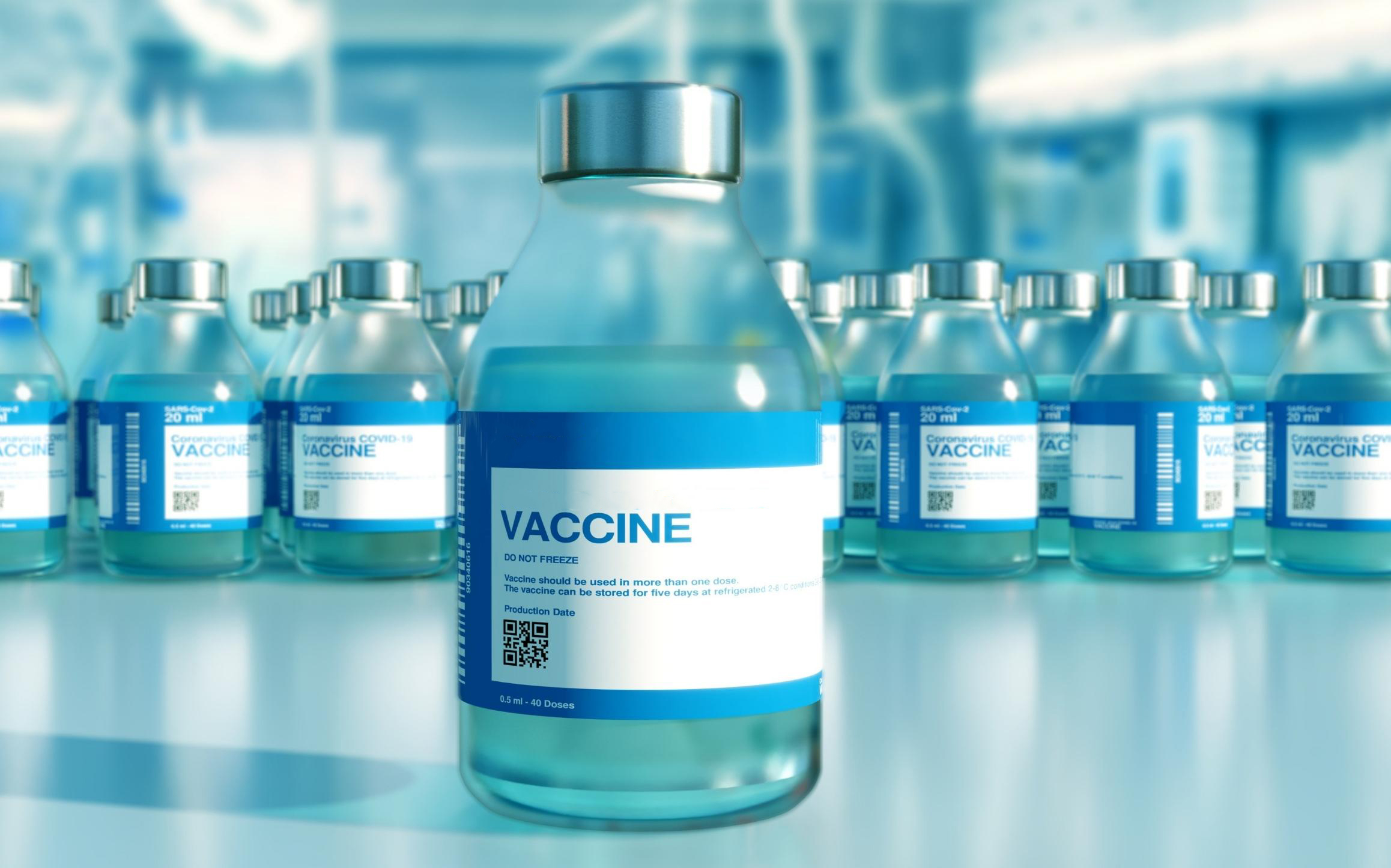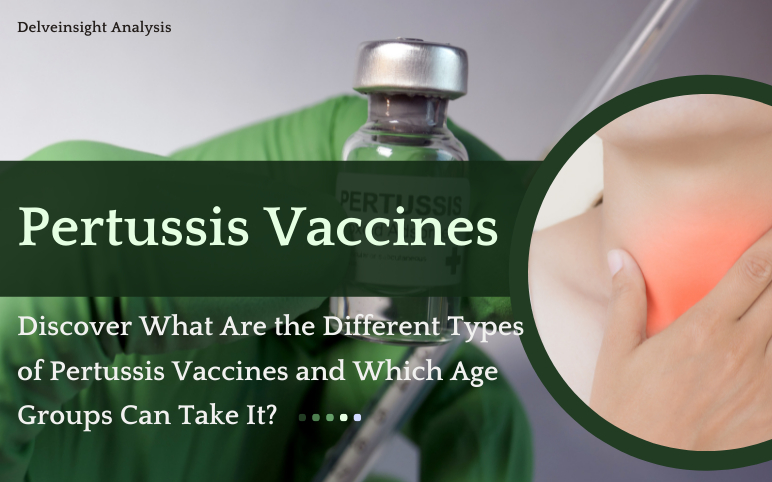What is Driving the Pertussis Treatment Market Forward?
Dec 17, 2021
Table of Contents
Pertussis, which was first discovered in the Paris epidemic of 1578, is distinguished by a 2-week paroxysmal cough, an inspiratory whoop, posttussive emesis, and posttussive syncope. Pertussis is caused by Bordetella pertussis. In 1906, Bordetella pertussis was discovered, and in the 1940s, a vaccine was created. Pertussis has three stages: catarrhal, paroxysmal, and convalescent. The catarrhal stage has modest symptoms that may go overlooked. The convalescent phase of Pertussis begins about 4 weeks after the disease’s onset. Coughing episodes become less frequent and less severe. During this stage of the disease, a slow recovery begins. Coughing episodes can reoccur for months at a time. The paroxysmal stage of Pertussis is distinguished by episodes of coughing with a distinct “whooping” sound when breathing in (inspiration). Because of its distinctive cough, the condition is known as Whooping Cough. Coughing episodes become less frequent during the convalescent stage, and symptoms improve. Immunity drops to 50% 12 years after finishing a vaccination series. Immunocompromised people can also get Bordetella bronchiseptica, which usually affects animals and is referred to as “kennel cough.”
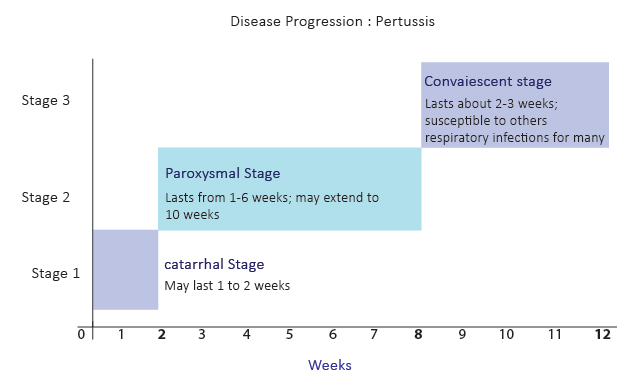
Pertussis is a highly contagious illness that lasts 6 to 10 weeks on average. Symptoms are more severe in infants and those who have never been inoculated against the sickness. It usually takes 7 to 10 days for signs and symptoms to show after you’ve been infected with whooping cough, however it can take longer in certain cases. They are usually mild at first and resemble common cold symptoms:
Downloads
Click Here To Get the Article in PDF
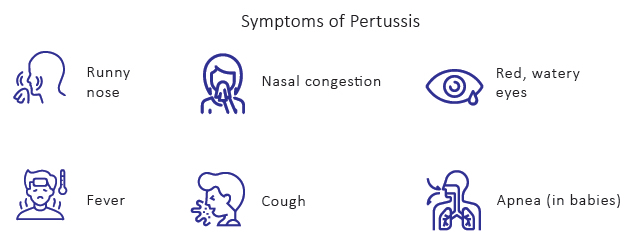
Pertussis signs and symptoms deteriorate after a week or two. Mucus builds up inside your airways, causing uncontrollable coughing. Coughing attacks that are severe and last a long time may:
- Elicit vomiting
- Result in a red or blue face Excessive fatigue
- End with a high-pitched “whoop” sound during the next inhalation
Many people, however, do not develop the characteristic whoop. A persistent hacking cough is sometimes the only sign that an adolescent or adult has whooping cough. Coughing may not occur at all in infants. Instead, they may struggle to breathe or even stop breathing for a short period of time.
Pertussis Risks and Complications
Pertussis can be fatal in infants, children, teenagers, and adults. Infants who contract pertussis are at risk of bradycardia, hypotension, and cardiac arrest. The emergence of pulmonary hypertension, which can worsen systemic hypotension and hypoxia, is increasingly recognized as a risk factor for infant mortality.
Infants with pertussis must be closely monitored to avoid potentially dangerous complications caused by a lack of oxygen. Serious pertussis complications include:
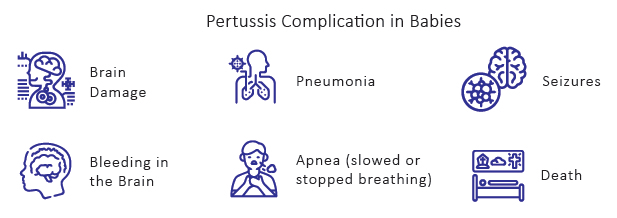
Pertussis can lead to pneumonia in teenagers and adults. Severe coughing can also lead to:
- Abdominal hernias
- Broken blood vessels
- Bruised ribs
- Trouble controlling when you pee
- Sleeping problems
Pertussis Epidemiology
Pertussis can be found in any geographical location across the globe. Outbreaks of the disease do not follow a seasonal pattern. According to the World Health Organization, 60 million cases of pertussis are reported worldwide each year. Pertussis causes life-threatening complications in between 500,000 and 1,000,000 people.
The widespread use of pertussis vaccines has significantly altered pertussis disease’s epidemiology and clinical presentation. Pertussis was primarily a childhood disease before vaccination, with the highest incidence in children aged 6 months to 2 years and only a few cases in adults. On the other hand, adolescent and adult pertussis is becoming more common in countries with high vaccination coverage. As per DelveInsight Epidemiology Forecast Report, the total pertussis vaccine coverage population in the 7MM and China was 65,837,354 in 2020, with the US accounting for the maximum age-specific vaccine coverage pertussis cases. Among the EU5 countries, Germany had the highest vaccination, followed by France and Italy.
However, the Pertussis vaccine is not 100% effective in preventing the disease. Individuals’ susceptibility to Pertussis increases with the amount of time since their last immunization in widespread outbreaks. According to the CDC in Atlanta, GA, the small risk of severe reactions associated with the DPT vaccine is negligible compared to the potential severity of the disease itself. The vaccine’s risk of serious complications is estimated to be 1 in 100,000 to 300,000, compared to 1 in 9,500 for the disease itself. Furthermore, pertussis diagnosis remains difficult and time-consuming.
How is Pertussis diagnosed?
Pertussis (whooping cough) is diagnosed by healthcare providers based on whether you have been exposed to pertussis by doing:
- A history of typical signs and symptoms.
- Physical examination
- A laboratory test that involves taking a sample of mucus (with a swab or syringe filled with saline) from the back of the throat through the nose
- Chest X-Ray
Pertussis Treatment Market
Pertussis treatment involves the administration of antibiotics, which help to clear bacteria from affected individuals’ throats within three to four days. The disease is no longer contagious by the fourth day of pertussis treatment. Erythromycin is the antibiotic of choice, and it is routinely administered because it prevents disease transmission to others. Antibiotic therapy may be administered to people who have had close contact with affected people, particularly children. Trimethoprim-sulfamethoxazole is an alternative antibiotic therapy used for people who cannot tolerate erythromycin.
The CDC recently reported that erythromycin might cause pyloric stenosis, a severe stomach disorder, in some infants. Infants with Pertussis who are critically ill should be kept in the dark, quiet room. To help prevent frequent episodes of severe coughing, they should be disturbed as little as possible. For seriously ill infants with Pertussis, hospitalization may be recommended. If the vomiting is severe, intravenous (IV) fluid therapy may be required to replace salt and water loss. To clear excessive mucous secretions, careful suctioning of the throat may be necessary. When suction fails to clear the airway, a surgical procedure to create a temporary opening into the throat (tracheostomy) may be performed.

Furthermore, the DTP, DTaP, and TDaP are among the pertussis vaccines used to prevent pertussis. There are different vaccines available for various age groups on the market. Adacel and Boostrix can be used by both adults and pregnant women.
The US Food and Drug Administration has approved the use of 12 combination vaccines to help protect against diphtheria and tetanus in the United States. 9 of these vaccines are also effective against pertussis. The FDA has only approved DTaP vaccines such as Daptacel, Infanrix, Kinrix, Pediarix, Pentacel, Quadracel, Vaxelis, and Boostrix, as well as TDaP vaccines such as Adacel and Boostrix, while Repevax/Adacel-Polio and Hexaxim are only approved in Europe. On the other hand, Quattrovac, Tetrabik, and Tribik are approved in Japan. Whereas Pentaxim is only available in China.
As per the DelveInsight Pertussis Market Report, the pertussis market size was USD 5,395 million in the seven major markets in 2020, with the US accounting for the maximum share (45.14%) of the overall market.
Furthermore, the dynamics of the pertussis market are expected to change in the coming years due to improvements in the recommendation of vaccination programs in pregnant women, raising awareness of the diseases, and incremental healthcare spending globally. Currently, several vaccines in the pertussis pipeline landscape are in the late and mid-phase of development, including BPZE1 (ILiAD Biotechnologies), SIIPL Tdap (Serum Institute of India/Bilthoven Biologicals and Vakzine Projekt Management GmbH), DTacP (China National Biotec Group, and Beijing Institute of Biological Products), BK1310/MT-2355 (Mitsubishi Tanabe Pharma Corporation), DTcP Infant and Booster (Cansino Bio), and others.

How can Pertussis be prevented?
The most effective technique of preventing whooping cough is vaccination. In the United States, two vaccines are available to help prevent pertussis: DTaP and Tdap. These vaccines protect against tetanus and diphtheria as well.
Babies and other people who are at high risk of serious disease should avoid contact with people who have whooping cough.
Antibiotics are sometimes given to family members of people who have had whooping cough or who have been exposed to it by health care providers. Antibiotics may keep them from contracting the disease.
You can also prevent pertussis (whooping cough) by doing the following:
- Washing your hands with soap and water on a regular basis. If soap and water are not available, an alcohol-based hand rub can be used.
- Avoid using unwashed hands to touch your face.
- Cleaning and disinfecting surfaces that you touch frequently, such as toys
- Coughs and sneezes should be covered with a tissue or upper shirt sleeve, not your hands.
- When you’re sick, stay at home.
- Avoiding close contact with sick people
What’s Ahead?
Despite widespread vaccination, pertussis remains uncontrolled, highlighting the shortcomings of current vaccination strategies. Neither severe and lethal pertussis in infants nor pertussis in general, including in the elderly, has been adequately controlled by current vaccination strategies. The disease’s incidence is increasing even in countries with highly high vaccination coverage. Pertussis, in general, is unlikely to be controlled by a single strategy. Perhaps by combining maternal immunization with cocooning strategies and novel neonatal immunization, severe and life-threatening pertussis in infants can be prevented in future generations. Furthermore, new acellular pertussis vaccines and live attenuated vaccines are in the pertussis pipeline, which will be available in the market in upcoming years.
FAQs
Pertussis has three stages: catarrhal, paroxysmal, and convalescent. The catarrhal stage has modest symptoms that may go overlooked. The convalescent phase of Pertussis begins about 4 weeks after the disease’s onset. The paroxysmal stage of Pertussis is distinguished by episodes of coughing with a distinct “whooping” sound when breathing in (inspiration).
Pertussis can be confirmed by isolating the organism Bordetella pertussis from an affected person’s sputum. These sputum samples are best obtained with a cotton swab inserted through the nose into the back of the throat (posterior pharynx).
The FDA has approved DTaP vaccines such as Daptacel, Infanrix, Kinrix, Pediarix, Pentacel, Quadracel, Vaxelis, and Boostrix, as well as TDaP vaccines such as Adacel and Boostrix.
Several vaccines in the pertussis pipeline landscape are in the late and mid-phase of development, including BPZE1, SIIPL Tdap, DTacP, BK1310/MT-2355, DTcP Infant and Booster, and others.
Leading companies such as ILiAD Biotechnologies, Serum Institute of India, Bilthoven Biologicals and Vakzine Projekt Management GmbH, China National Biotec Group, and Beijing Institute of Biological Products, Mitsubishi Tanabe Pharma Corporation, Cansino Bio, and others are currently developing vaccines for pertussis.
Downloads
Article in PDF

